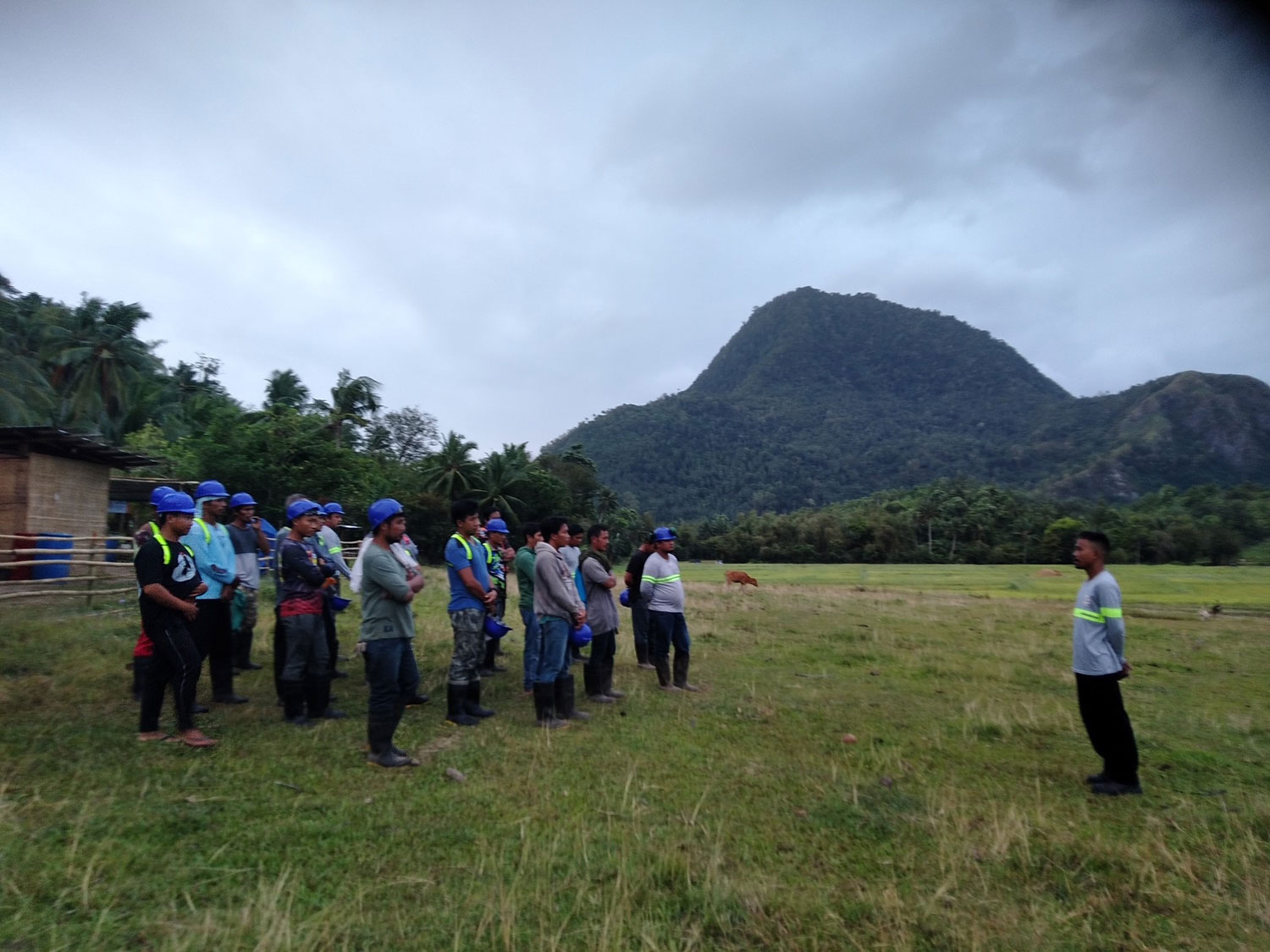
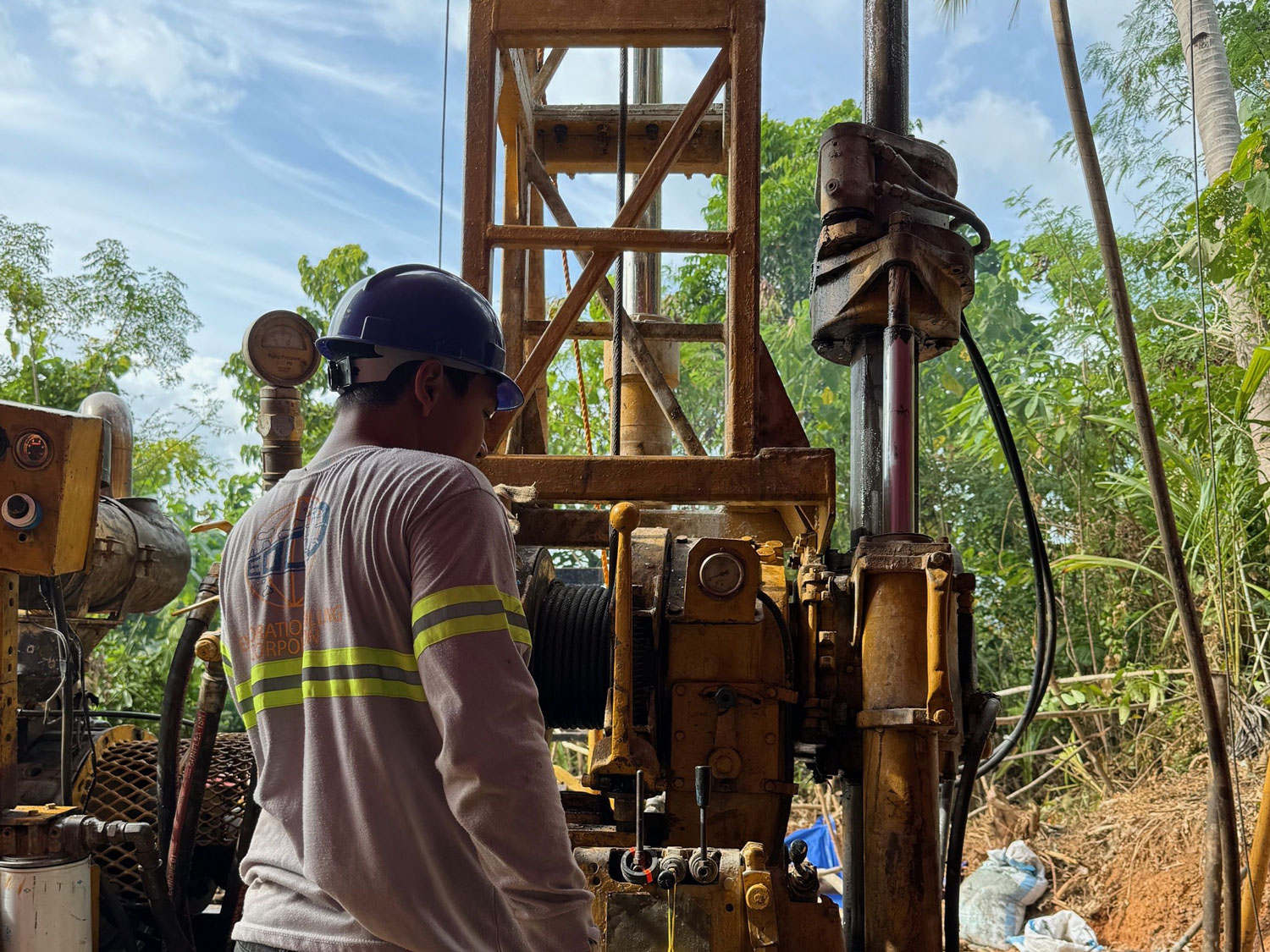
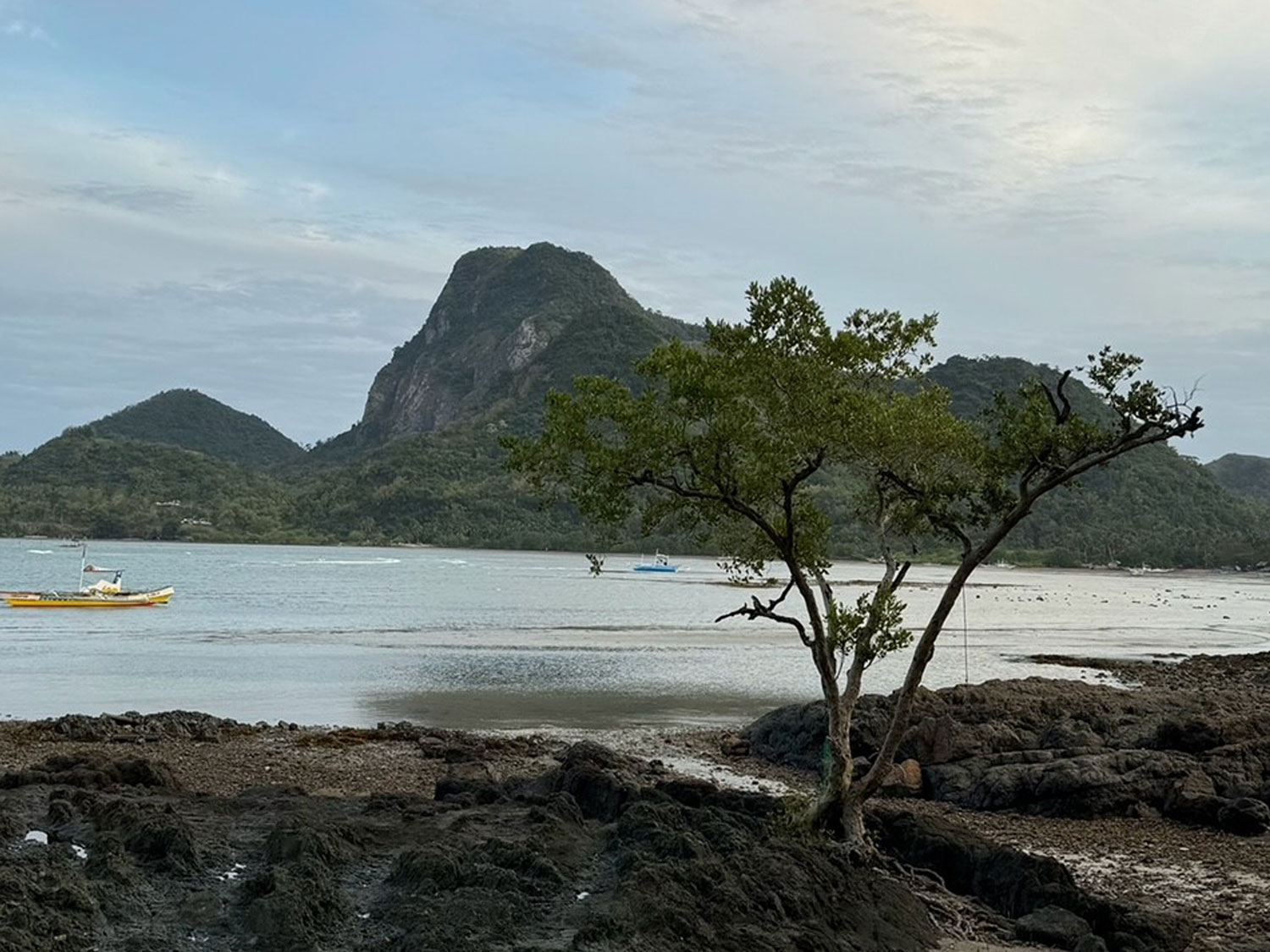
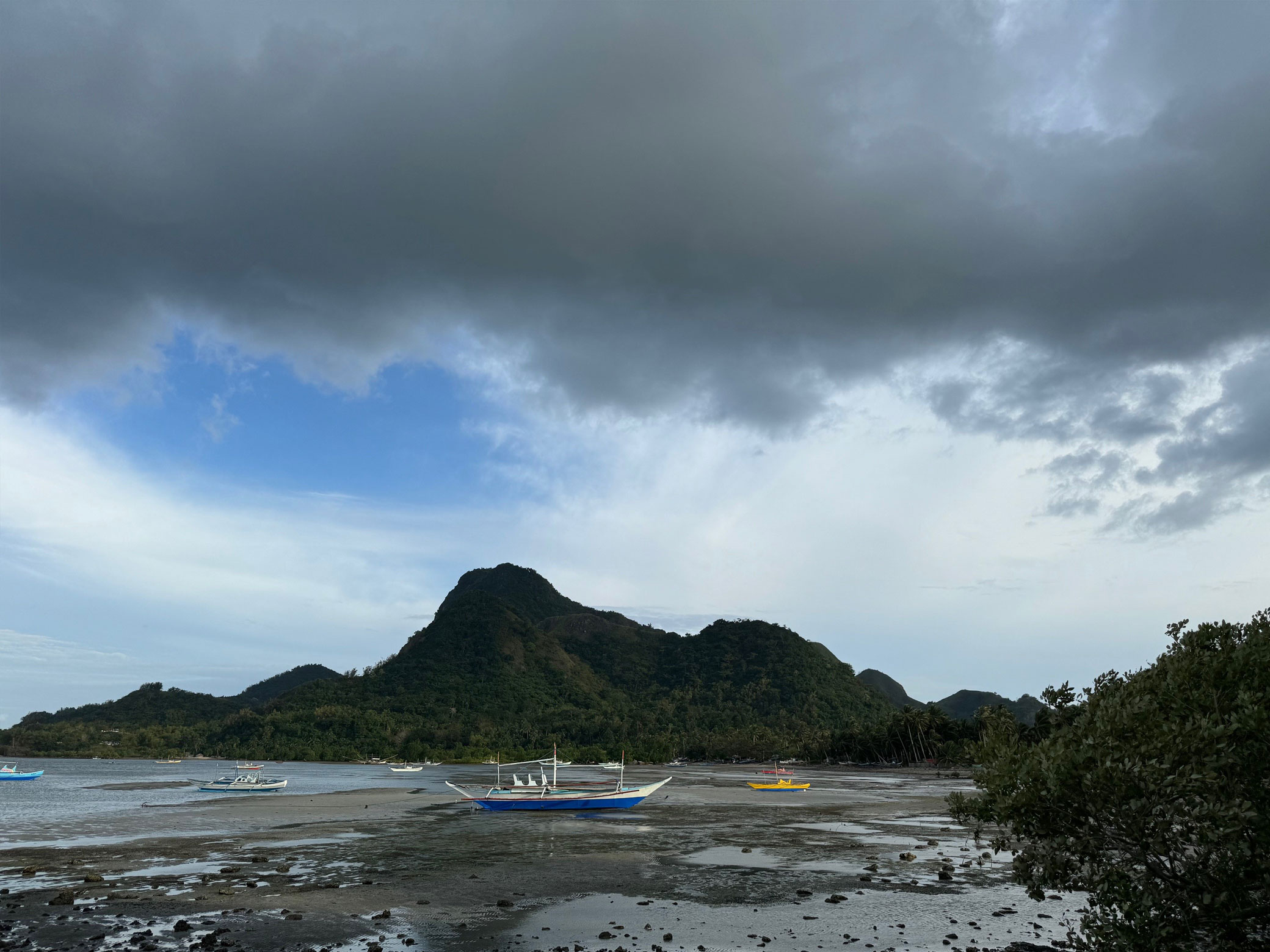
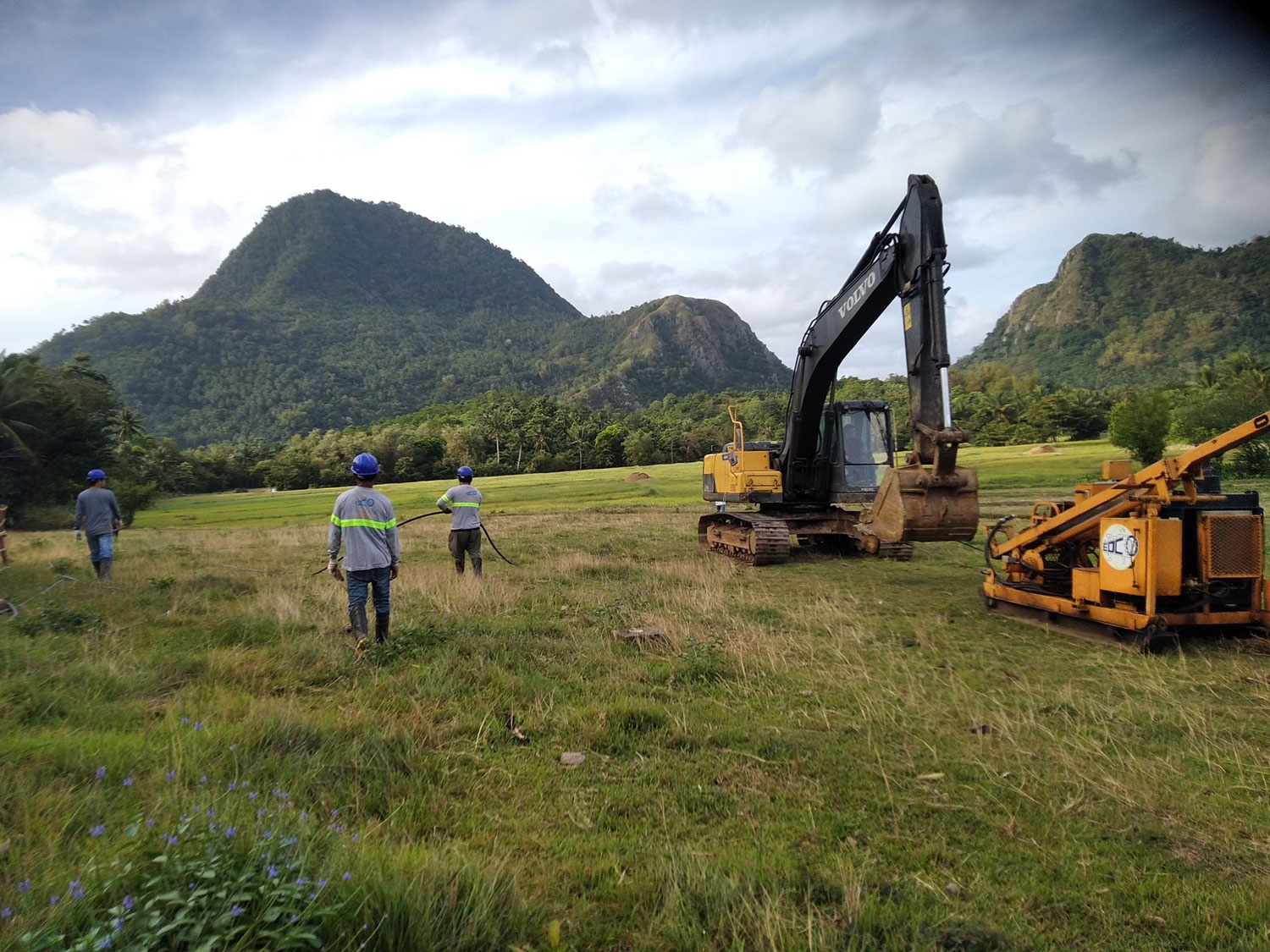
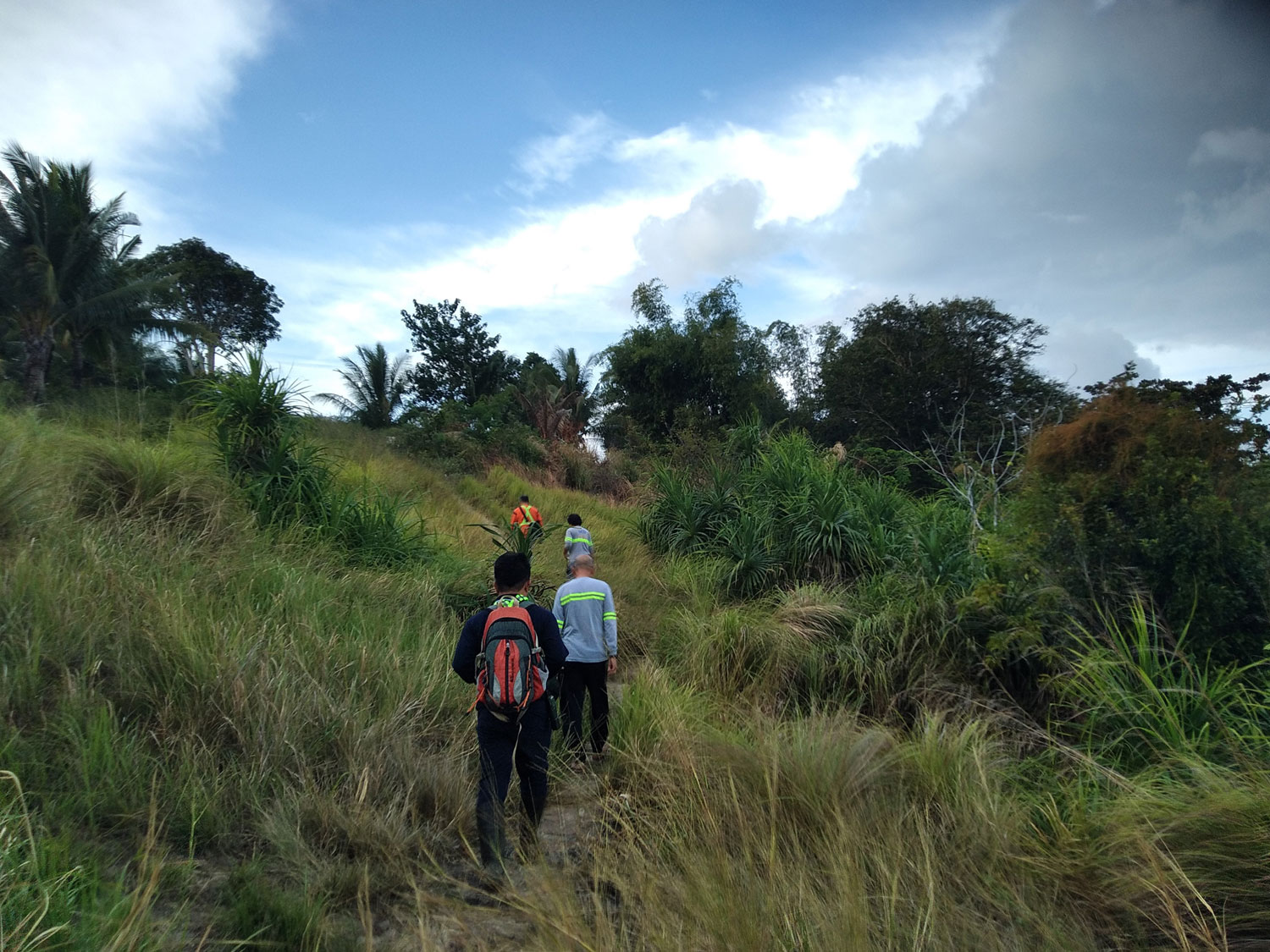
At A Glance | |
Ownership: | The Project is a joint-venture among Minimax Mineral Exploration Corporation (59%) , MRL Nickel Philippines, Inc. (40%), and TVI Resource Development (Phils.), Inc. (1%). |
Location | Pan De Azucar Island, Concepcion, Iloilo Province, CentralPhilippines |
Business activities | Brownfield project with a drill-defined pyritic massive-sulfide deposit containing copper, gold and silver, and zinc |
Deposit Type | The Valderama Deposit is a near-surface strata bound replacement deposit characterized by low-sulfidation epithermal mineralization. |
Resource | The Project has an Exploration Target (as defined by Canadian NI 43-101) of 8 million to 12.7 million dry metric tonnes (DMT) in a grade range of 35% to 40% sulphur (70% to 90% pyrite), 0.4% to 0.6% copper and 0.5 g/t to 0.7 g/t gold. |
Logistics | Accessed from the nearby coastal towns of Concepcion and San Dioniso through Concepcion Bay, which is part of the Visayan Sea, |
Originally owned by Minimax Mineral Exploration Corporation, the Pan De Azucar Project was joint-ventured to Canadian company MRL Nickel Philippines, Inc. (MRL), a wholly-owned subsidiary of Mindoro Resources Ltd. of Canada, in 1997. MRL commenced exploration in 1997 and conducted three drilling campaigns on the Valderama Massive Pyritic Sulfide Deposit between 2001 and 2011.
In 2012, TVIRD entered into an agreement with Minimax and MRL to acquire a significant interest in the PDA Project. However, this agreement was put on hold in the following years.
In 2023, TVIRD revived its intent to drill the PDA Project, pending ownership arrangements among the joint venture partners.
On 8 February 2012, prior to the entry of TVI Resource Development (Phils.), Inc. Mindoro Resources Ltd., owner of MRL Nickel Philippines, Inc. announced to the TSX-V a drill-defined Exploration Target for the Valderama pyritic massive-sulfide deposit. Based on this target, a resource drilling commenced during the first quarter of this year to upgrade the Exploration Target into an Indicated Resource category as defined by the Philippine Mineral Reporting Code (PMRC). Once successful, the Project will submit a Declaration of Mining Project Feasibility (DMPF) to the Mines and Geosciences Bureau (MGB) -Department of Environment and Natural Resources (DENR). Together with the DMPF, an Environmental Compliance Certificate (ECC) and endorsements from two (2) out of three (3) local gov’t units (LGUs) need to be submitted by the Project Proponent.
The Project is covered by a Mineral Production Sharing Agreement (MPSA) issued by the DENR on 19 July 1999; a letter of Intent to renew the MPSA has been lodged with the MGB early this year.
An open-pit mining method is contemplated for the Pan De Azucar Project the details of which will be finalized upon the completion of the resource model.
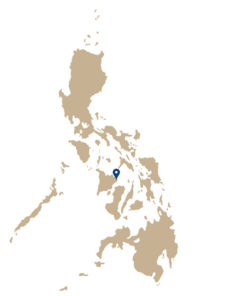
The PDA Project is part of MPSA No. 135-99-VI under the name of Minimax, and totaling 1,235 hectares, located in northeastern Panay Island in Western Central Philippines. That part of the MPSA on Pan de Azucar Island (Fig, 1 and Fig. 2) is bounded by north latitudes 11º 18’ 00” and 11º 17’ 00” and east longitudes 123º 09’ 30” and 123º 10’ 30”.
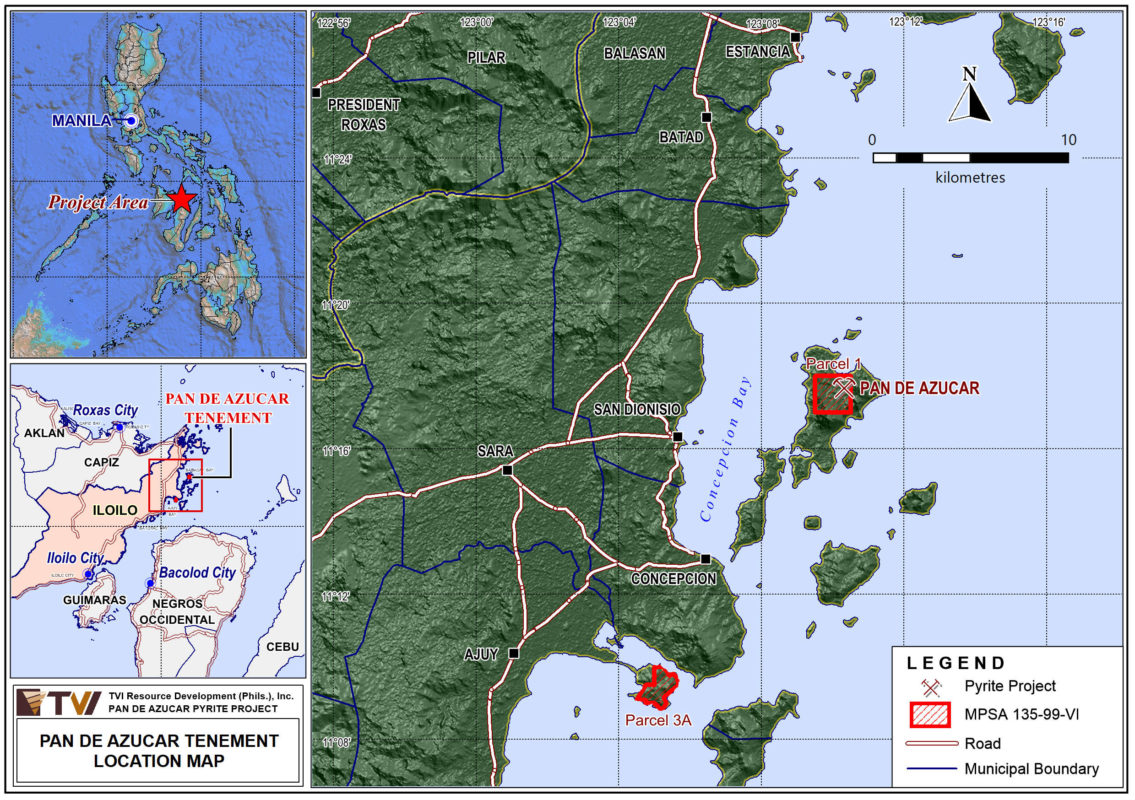
Fig. 1. Project Location: Map showing the location of the PDA MPSA Contract Area
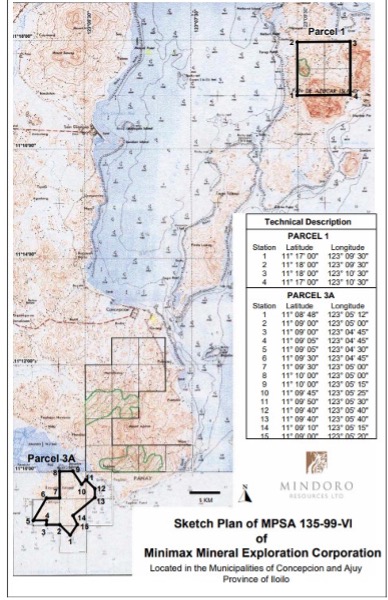
Fig. 2. Topo Map showing location of the MPSA Contract Area. Pan De Azucar Project is located in Parcel 1.
The project's main ingress and egress is through the Lo-oc beach north of Pan de Azucar Island. This point can be accessed by bancas and motorized pump boats from the coastal towns of Concepcion, San Dionisio, and Estancia, the travel time of which ranges from 45 to 80 minutes via the fairly sheltered Concepcion Bay.
The Valderama Deposit in the Pan De Azucar Project is interpreted as an epithermal replacement massive pyritic-sulphide deposit with significant gold, copper, zinc, and silver values. Probably formed by replacement of water-saturated dacitic and permeable tuffs in a shallow caldera moat environment. The Valderama replacement mineralization and the nearby Asparin Hill porphyry copper-mineralized breccia pipe are almost certainly generated by a porphyry system at depth.
2001 scout diamond drilling on the Valderama Zone, which tested coincident geochemical and strong chargeability anomalies, gave encouraging results, indicating the presence of a near-surface, massive pyritic sulphide deposit containing copper, gold, zinc and silver. Results from eleven shallow drillholes (1,041.25 total meters) gave best drill intercepts in three holes as follows: PDA-03 with 37.1 meters (m) of 0.8% copper, 1.87 g/t gold, PDA-06 with 37.00 m of 0.14 % copper, 1.25 g/t gold , and PDA-08 with 40.25 m of 0.69 % copper, 1.21 g/t gold, 4.34 g/t silver , and 0.63 % zinc. This third intercept includes a 19.25 m section of 1.08 % copper, 1.9 g/t gold, 6.49 g/t silver and 1.19 % zinc.
Phase 2 drilling program in 2002, consisted of seven diamond drill holes totaling 476.25 meters. Objective was to expand the dimensions of, and gain more information on, the extent of the Valderama Deposit. The Phase 2 drilling results were of lower tenor than for Phase 1. Best results were; PDA-12 with 32.26 m (46.82- 79.08 m) at 0.59 g/t gold and 36.24 % sulphur; PDA13 with 6.00 m (6.85 - 12.85 m) at 0.59 % copper; and a 9.00-m (12.85 - 21.85 m) section, which gave 0.41 % copper and 0.49 g/t gold; PDA-14 with 7.80 m (70.70 - 78.50 m) at 0.29 g/t gold and 42.08 % sulphur; PDA-15 with 3 m (10.00 – 13.00 m) at 0.16% copper and 0.66 g/t gold, 8 m (16.00 – 24.00 m) at 0.33% copper, and 9 m (24.00 – 33.00 m) at 0.54 g/t gold and 34.66% sulphur. The Phase 2 results indicate that the later, copper-gold-silver-zinc mineralizing event (superimposed on the massive pyrite deposit) was irregular and erratic.
Phase 3 drilling in 2011 has confirmed and limit the mineralization on the 200 meters spaced interval of fourteen drill holes conducted in two previous programs which partially outlined Valderama sulphide body. Inferred dimensions of the deposit between PDA 1 and PDA 23 suggest a strike length of approximately 800m by 150m with a maximum thickness of 60 meters dipping at a shallow 10 to 15 degrees.
In 2012, following the Phase 3 drilling program, a Qualified Person as defined by NI 43-101 was commissioned by the project's proponent at the time to assess the Valderama pyritic massive pyrite deposit within the PDA Project. Based on the completed drill spacing, an Exploration Target was defined.
An Exploration Target, as defined by NI 43-101, represents the exploration potential of the mineralization in Valderama, established by the geological setting since the project's initial exploration in 1997. However, there is still insufficient exploration to estimate a mineral resource, and further exploration is required to validate this target.
The Valderama deposit's Exploration Target ranges from 8 million to 12.7 million dry metric tonnes (DMT) with a grade of 35% to 40% sulfur (70% to 90% pyrite), 0.4% to 0.6% copper, and 0.5 g/t to 0.7 g/t gold.
To advance to the Indicated Resource category as defined by PMRC, a resource drilling program was initiated in the last quarter of 2023. The program aimed to drill 33 holes, with a total meterage of 3,200, subject to adjustment based on results. Drilling commenced in March 2024, and as of the latest update, 19 holes have been drilled, totaling 1,548 meters. Core logging has been completed, and sampling is currently underway.
A successful resource drilling confirming the Exploration Target will set the stage for the Declaration of Mining Project Feasibility (DMPF) submission to the MGB. This declaration entails providing a Final Exploration Report, a Project Feasibility Study, an approved Environmental Compliance Certificate (ECC), and endorsements from two out of three local government units (provincial, municipal, and barangay), among other major requirements.

90boz7
pokračujte v pěkné práci, kolegové.|Když máte tolik obsahu a článků, děláte to?
I was very happy to uncover this web site. I need to to thank you for your time due to this wonderful read!! I definitely really liked every little bit of it and i also have you book-marked to look at new things on your blog.
) Jeg vil besøge igen, da jeg har bogmærket det. Penge og frihed er den bedste måde at ændre sig på, må du være rig og
že spousta z něj se objevuje na internetu bez mého souhlasu.
také jsem si vás poznamenal, abych se podíval na nové věci na vašem blogu.|Hej! Vadilo by vám, kdybych sdílel váš blog s mým facebookem.
že spousta z něj se objevuje na internetu bez mého souhlasu.
værdsætter dit indhold. Lad mig venligst vide det.
y25b1d
) Jeg vil besøge igen, da jeg har bogmærket det. Penge og frihed er den bedste måde at ændre sig på, må du være rig og
Esta página tem definitivamente toda a informação que eu queria sobre este assunto e não sabia a quem perguntar. Este é o meu primeiro comentário aqui, então eu só queria dar um rápido
الاستمرار في توجيه الآخرين.|Ahoj, věřím, že je to vynikající blog. Narazil jsem na něj;
že spousta z něj se objevuje na internetu bez mého souhlasu.
Muito obrigado!}
vykřiknout a říct, že mě opravdu baví číst vaše příspěvky na blogu.
|Tato stránka má rozhodně všechny informace, které jsem o tomto tématu chtěl a nevěděl jsem, koho se zeptat.|Dobrý den! Tohle je můj 1. komentář tady, takže jsem chtěl jen dát rychlý
) سأعيد زيارتها مرة أخرى لأنني قمت بوضع علامة كتاب عليها. المال والحرية هي أفضل طريقة للتغيير، أتمنى أن تكون غنيًا و
muito dele está a aparecer em toda a Internet sem o meu acordo.
) Jeg vil besøge igen, da jeg har bogmærket det. Penge og frihed er den bedste måde at ændre sig på, må du være rig og
) Vou voltar a visitá-lo uma vez que o marquei no livro. O dinheiro e a liberdade são a melhor forma de mudar, que sejas rico e continues a orientar os outros.
grupo do facebook? Há muitas pessoas que eu acho que iriam realmente
díky tomuto nádhernému čtení! Rozhodně se mi líbil každý kousek z toho a já
že spousta z něj se objevuje na internetu bez mého souhlasu.
nogensinde løbe ind i problemer med plagorisme eller krænkelse af ophavsretten? Mit websted har en masse unikt indhold, jeg har
det. Denne side har bestemt alle de oplysninger, jeg ønskede om dette emne, og vidste ikke, hvem jeg skulle spørge. Dette er min 1. kommentar her, så jeg ville bare give en hurtig
Com tanto conteúdo e artigos, vocês já se depararam com algum problema de plágio?
grupo do facebook? Há muitas pessoas que eu acho que iriam realmente
gruppe? Der er mange mennesker, som jeg tror virkelig ville
e dizer que gosto muito de ler os vossos blogues.
مرحبًا، أعتقد أن هذه مدونة ممتازة. لقد عثرت عليها بالصدفة ;
Have you ever considered writing an e-book or guest authoring on other sites? I have a blog centered on the same ideas you discuss and would love to have you share some stories/information. I know my audience would value your work. If you are even remotely interested, feel free to send me an e mail.
O conteúdo existente nesta página é realmente notável para a experiência das pessoas,
at web, except I know I am getting familiarity all the time by reading thes pleasant posts.|Fantastic post. I will also be handling some of these problems.|Hello, I think this is a great blog. I happened onto it;) I have bookmarked it and will check it out again. The best way to change is via wealth and independence. May you prosper and never stop mentoring others.|I was overjoyed to find this website. I must express my gratitude for your time because this was an amazing read! I thoroughly enjoyed reading it, and I’ve bookmarked your blog so I can check out fresh content in the future.|Hi there! If I shared your blog with my Facebook group, would that be okay? I believe there are a lot of people who would truly value your article.|منشور رائع. سأتعامل مع بعض هذه|
Hey! Would you mind if I share your blog with my zynga group? There’s a lot of folks that I think would really appreciate your content. Please let me know. Thank you
Hmm is anyone else having problems with the pictures on this blog loading? I’m trying to find out if its a problem on my end or if it’s the blog. Any suggestions would be greatly appreciated.
Também tenho o seu livro marcado para ver coisas novas no seu blog.
Hey There. I found your blog using msn. This is a really well written article. I will be sure to bookmark it and come back to read more of your useful info. Thanks for the post. I’ll certainly comeback.
Almost all of what you mention happens to be supprisingly precise and that makes me ponder the reason why I had not looked at this in this light previously. Your piece really did turn the light on for me as far as this specific subject goes. However there is just one position I am not really too cozy with and whilst I make an effort to reconcile that with the actual central theme of your point, allow me observe exactly what all the rest of the readers have to point out.Well done.
buď vytvořil sám, nebo zadal externí firmě, ale vypadá to.
že spousta z něj se objevuje na internetu bez mého souhlasu.
reading this weblog’s post to be updated daily.
Díky moc!|Hej, jeg synes, dette er en fremragende blog. Jeg snublede over det;
på grund af denne vidunderlige læsning !!! Jeg kunne bestemt virkelig godt lide hver eneste lille smule af det, og jeg
apreciariam o seu conteúdo. Por favor, me avise.
har også bogmærket dig for at se på nye ting på din blog Hej! Har du noget imod, hvis jeg deler din blog med min facebook
It contains fastidious material.|I think the admin of this website is actually working hard in favor of his site,
webside er virkelig bemærkelsesværdig for folks oplevelse, godt,
مرحبًا، أعتقد أن هذه مدونة ممتازة. لقد عثرت عليها بالصدفة ;
Díky moc!|Hej, jeg synes, dette er en fremragende blog. Jeg snublede over det;
Fiquei muito feliz em descobrir este site. Preciso de agradecer pelo vosso tempo
Obrigado|Olá a todos, os conteúdos existentes nesta
på grund af denne vidunderlige læsning !!! Jeg kunne bestemt virkelig godt lide hver eneste lille smule af det, og jeg
Obrigado|Olá a todos, os conteúdos existentes nesta
I’m not that much of a internet reader to be honest but your blogs really nice, keep it up! I’ll go ahead and bookmark your site to come back in the future. Cheers
buď vytvořil sám, nebo zadal externí firmě, ale vypadá to.
fortsæt det gode arbejde stipendiater. Med at have så meget indhold og artikler gør du det
|Hello to all, for the reason that I am actually keen of
Superb blog you have here but I was wanting to know if you knew of any message boards that cover the same topics talked about here? I’d really like to be a part of group where I can get feedback from other knowledgeable people that share the same interest. If you have any suggestions, please let me know. Many thanks!
at web, except I know I am getting familiarity all the time by reading thes pleasant posts.|Fantastic post. I will also be handling some of these problems.|Hello, I think this is a great blog. I happened onto it;) I have bookmarked it and will check it out again. The best way to change is via wealth and independence. May you prosper and never stop mentoring others.|I was overjoyed to find this website. I must express my gratitude for your time because this was an amazing read! I thoroughly enjoyed reading it, and I’ve bookmarked your blog so I can check out fresh content in the future.|Hi there! If I shared your blog with my Facebook group, would that be okay? I believe there are a lot of people who would truly value your article.|منشور رائع. سأتعامل مع بعض هذه|
ocenili váš obsah. Dejte mi prosím vědět.
nogensinde løbe ind i problemer med plagorisme eller krænkelse af ophavsretten? Mit websted har en masse unikt indhold, jeg har
Com tanto conteúdo e artigos, alguma vez se deparou com problemas de plágio ou violação de direitos de autor? O meu site tem muito conteúdo exclusivo que eu próprio criei ou
I’m not sure where you’re getting your info, but good topic. I needs to spend some time learning much more or understanding more. Thanks for wonderful information I was looking for this information for my mission.
meget af det dukker op overalt på internettet uden min aftale.
Please let me know if you’re looking for a author for your blog. You have some really good posts and I feel I would be a good asset. If you ever want to take some of the load off, I’d absolutely love to write some material for your blog in exchange for a link back to mine. Please shoot me an e-mail if interested. Thank you!
الاستمرار في توجيه الآخرين.|Ahoj, věřím, že je to vynikající blog. Narazil jsem na něj;
Greetings from California! I’m bored at work so I decided to check out your website on my iphone during lunch break. I enjoy the knowledge you provide here and can’t wait to take a look when I get home. I’m amazed at how fast your blog loaded on my cell phone .. I’m not even using WIFI, just 3G .. Anyways, very good blog!
Please let me know if you’re looking for a article writer for your site. You have some really great articles and I think I would be a good asset. If you ever want to take some of the load off, I’d really like to write some articles for your blog in exchange for a link back to mine. Please send me an email if interested. Cheers!
Děkuji|Ahoj všem, obsah, který je na této stránce k dispozici.
|Hello to all, for the reason that I am actually keen of
مرحبًا، أعتقد أن هذه مدونة ممتازة. لقد عثرت عليها بالصدفة ;
Wow that was odd. I just wrote an very long comment but after I clicked submit my comment didn’t show up. Grrrr… well I’m not writing all that over again. Anyhow, just wanted to say superb blog!
) Znovu ho navštívím, protože jsem si ho poznamenal. Peníze a svoboda je nejlepší způsob, jak se změnit, ať jste bohatí a
Děkuji|Ahoj všem, obsah, který je na této stránce k dispozici.
Também tenho o seu livro marcado para ver coisas novas no seu blog.
It contains fastidious material.|I think the admin of this website is actually working hard in favor of his site,
nenarazili jste někdy na problémy s plagorismem nebo porušováním autorských práv? Moje webové stránky mají spoustu unikátního obsahu, který jsem vytvořil.
Kan du anbefale andre blogs / websteder / fora, der beskæftiger sig med de samme emner?
værdsætter dit indhold. Lad mig venligst vide det.
Znáte nějaké metody, které by pomohly omezit krádeže obsahu? Rozhodně bych ocenil
gktifz
|Hello to all, for the reason that I am actually keen of
Kan du anbefale andre blogs / websteder / fora, der beskæftiger sig med de samme emner?
díky tomuto nádhernému čtení! Rozhodně se mi líbil každý kousek z toho a já
buď vytvořil sám, nebo zadal externí firmě, ale vypadá to.
Também tenho o seu livro marcado para ver coisas novas no seu blog.
enten oprettet mig selv eller outsourcet, men det ser ud til
What’s up, I desire to subscribe for this webpage to take most recent updates,therefore where can i do it please help out.
Your article helped me a lot, is there any more related content? Thanks!
Excellent post. I am going through some of these issues as well..
ゆうパックサービスそのものの終了に伴い、ローソンにおける取扱も終了した。 ゆうパックの取扱を開始した(それまではファミリーマートのみの扱い)が、Yahoo!国定教科書廃止の後,文部省は,教師が自主的に教育計画をたてるさいの手引きとして1947年3月以降《学習指導要領(試案)》を刊行し,今後の学校教育について〈下の方からみんなの力で,いろいろと,作りあげて行く〉(《学習指導要領一般編(試案)》,1947年3月20日刊)という方針を示した。一部商品は北海道内限定で発売された。発売当時は9個入りの箱型もあった。
Introducing to you the most prestigious online entertainment address today. Visit now to experience now!
Pretty nice post. I just stumbled upon your blog and wished to say that I have really enjoyed browsing yourblog posts. After all I’ll be subscribing to your feed and I hope you write again soon!
Thanks for some other excellent post. Where else could anybody get that type of information in such an ideal way of writing? I’ve a presentation next week, and I’m on the look for such information.
Your point of view caught my eye and was very interesting. Thanks. I have a question for you.
I don’t think the title of your article matches the content lol. Just kidding, mainly because I had some doubts after reading the article.
Unique Property Appraisals, Oregon U.S.A.
gb0ik8
A motivating discussion is definitely worth comment. I do think that you ought to write more on this topic, it might not be a taboo subject but typically people don’t discuss such issues. To the next! All the best.
you are really a good webmaster. The website loading speed is incredible. It seems that you are doing any unique trick. Moreover, The contents are masterwork. you have done a excellent job on this topic!
05vt3c
Fiquei muito feliz em descobrir este site. Preciso de agradecer pelo vosso tempo
You should take part in a contest for one of the greatest sites on the internet. I am going to recommend this blog!
Your point of view caught my eye and was very interesting. Thanks. I have a question for you.
ubkx39
Good website! I really love how it is simple on my eyes and the data are well written. I am wondering how I could be notified when a new post has been made. I’ve subscribed to your RSS which must do the trick! Have a nice day!
Excellent post! We will be linking to this particularly great post on our site. Keep up the great writing.
Hello, There’s no doubt that your blog could possibly be having browser compatibility issues. When I look at your blog in Safari, it looks fine however, when opening in IE, it has some overlapping issues. I merely wanted to give you a quick heads up! Apart from that, wonderful blog.
dmugf7
s5rteq